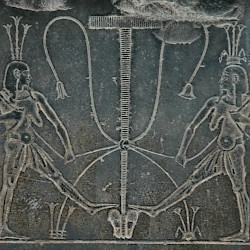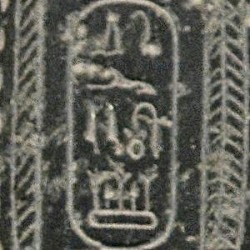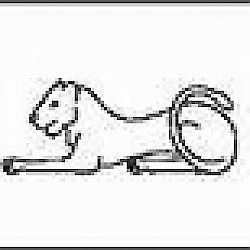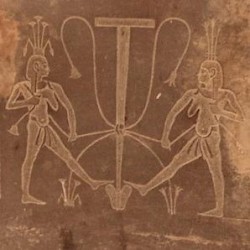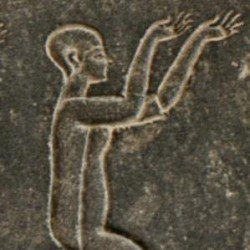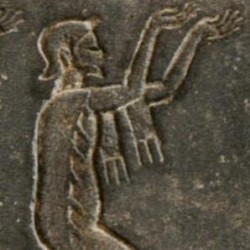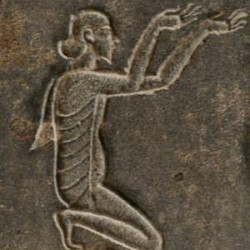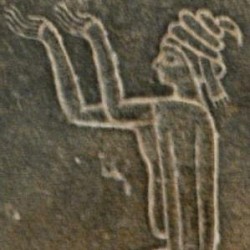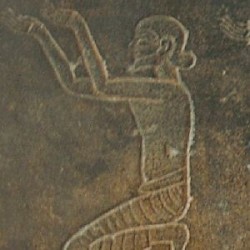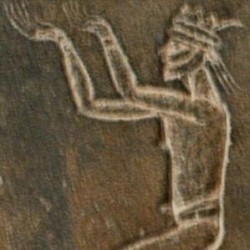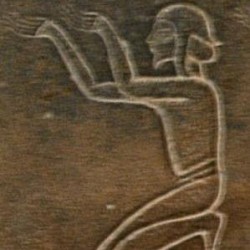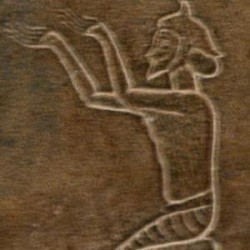Susa, Statue of Darius
Susa (Elamitic, Babylonian: Šušim; Greek τὰ Σοῦσα): capital of Elam, favorite residence of the Persian king Darius I the Great.

The statue of the Achaemenid king Darius I the Great (r.522-486) was carved in Egypt from greywacke from the quarries of the Wadi Hammamat, but was later erected near the Great Gate of the royal palace in Susa. It is not entirely clear why it was moved from the ancient country along the Nile to the capital of equally ancient Elam, but a probable explanation is that this happened after 486 BCE, when the Egyptians revolted against Darius' son and successor Xerxes. He reconquered the country during the first years of his reign and it is possible that the victorious army carried off the statue of the king's father from Egypt to Susa.
The statue was discovered on Christmas Eve 1972; today, it is in the National Museum in Tehran.
The statue, which once was covered with paint and must have stood about three meters tall, is very interesting, because it is the only free-standing sculpture from ancient Persia. (There is one reference to a similar statue of Xerxes in Persepolis.)
Reliefs are more common. Another interesting element is that it is, in fact, an empire list: an enumeration of nations subject to the great king. The difference with the more regular examples of this literary genre (examples) is that the names of the nations are written in hieroglyphs.
Belt and Base
On the belt of the statue of king Darius the Great are signs in hieroglyphic script that spell his pharaonic name: which read drjwS.
The central scene on the base of the statue (repeated on the back side) shows two almost identical figures: it is the god Hapi, shown in his Upper and Lower Egypt mode. (He has breasts to indicate the fertility.) Hapi is seen "binding together" the country of Egypt using the iconographic plants that represent the Two Lands - a lotus and a papyrus. This stands for "uniting" the country, a regnal power motif that was used since at least the Middle Kingdom and is known as sema-tawy. In other words, Darius presents himself in truly Egyptian style.
This is also expressed in the inscription to the left and right of the two Hapis:
To you is given all power, stability, all health and gladness of heart. All lands of the plains and of the mountains are reunited under your sandals. To you is given Upper and Lower Egypt, who offer their adoration to your beautiful face, like unto the god Ra, in eternity.
Another inscription, near the king's right foot, says:
His Majesty has consecrated this long-lasting statue fashioned in his likeness so that the memory of his spirit would dwell forever next to Atum.
Although the statue is Egyptian in nature, Darius also seems to have carried a lotus flower and a staff in his hands, common Persian symbols. A pharaoh would have carried other attributes. Darius' robe is also Iranian.
Inscription DSab
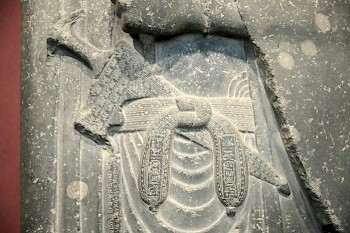
The inscription on the dagger and belt is known as DSab and runs like this:
A great god is Ahuramazda, who created this earth, who created yonder sky, who created man, who created happiness for man, and who made Darius king.
This is the statue, made of stone, which Darius ordered to be made in Egypt. This is how everyone who will see this in the future, will know that the Persian man ruled in Egypt.
I am Darius, the great king, king of kings, king of all peoples, king in this great earth far and wide, the son of Hystaspes, an Achaemenid.
King Darius says: May Ahuramazda protect me and what I did!
Subject Nations
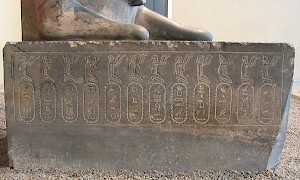
The left- and right-hand sides of the base are decorated with two times twelve figures, which represent twenty-four subject nations. It is an unusual type of empire list, comparable to the Behistun Inscription, DPe, the Naqš-e Rustam inscription, or - from Susa - DSe.
Below are all figures. Figures looking to the right are on the left-hand side of the statue, those looking to the left are on the right-hand side. The latter represent Iranian nations, while the figures looking to the right are non-Iranian.
